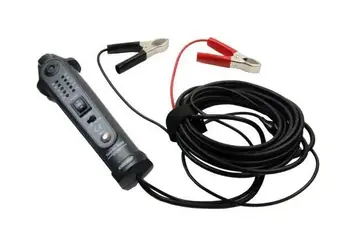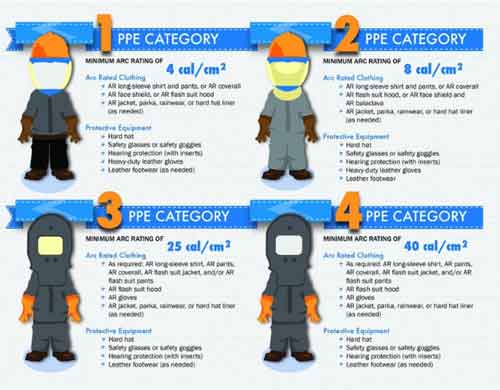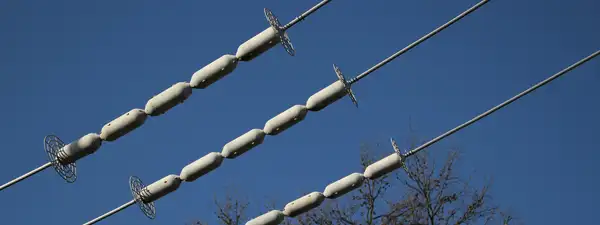Testing of Electrical Power Cable
By G Fox, Editor, The Electricity Forum

Download Our OSHA FS3529 Fact Sheet – Lockout/Tagout Safety Procedures

- Learn how to disable machines and isolate energy sources safely
- Follow OSHA guidelines for developing energy control programs
- Protect workers with proper lockout devices and annual inspections
Power cable test verifies insulation resistance, dielectric withstand, continuity, and partial discharge using VLF/hipot methods for HV/MV/LV cables, supporting diagnostics, commissioning, predictive maintenance, fault location, condition monitoring, and compliance with IEC/IEEE standards.
What Is a Power Cable Test?
A power cable test checks insulation, dielectric strength, and continuity to ensure safety and IEC/IEEE compliance.
✅ VLF/hipot withstand: kV step and hold to detect insulation defects
✅ IR/PI testing to assess moisture ingress and insulation health
✅ Partial discharge and tan delta for condition-based diagnostics
TYPE TESTS, ACCEPTANCE TEST, ROUTINE TESTS
The following tests are type test of wires used as conductors in electrical power cables.
Persulphate test (for copper):
Since the tinning process of copper can possibly produce pin holes on the copper, this test is done on tinned copper wire to determine the exposed copper. Typically a sample is taken and subjected to the persulfate solution; its conclusions should meet or not meet the required specifications (IS 10810, part 4 – 1984)
For broader procedural context, practitioners often consult the cable handling and testing procedures to align sampling, cleaning, and solution preparation steps.
Annealing test (for copper):
During construction/installation procedures, the conductor cables are subjected to twisting and bending. This test is carried out on a sample of the conductor cable prior to installation and subjected to a tensile test which will elongate the sample. The observations should meet or not meet the specified allowed elongation for that particulate gauge.
When correlating elongation limits with conductor construction, the Know Your Electrical Cables guide provides helpful context on materials and gauge selection.
Tensile test (for Aluminium):
This is a tensile test and is performed on aluminium wires only to verify the strength of the aluminium wire sample. The diameter of the sample and the breaking load of the sample is recorded, the tension strength is calculated and verified against the required specifications.
Test Your Knowledge About Wire and Cable!
Think you know Wire and Cable? Take our quick, interactive quiz and test your knowledge in minutes.
- Instantly see your results and score
- Identify strengths and areas for improvement
- Challenge yourself on real-world electrical topics
Specifying appropriate grips, extensometers, and load-cell ranges is aided by referencing electrical testing equipment practices to maintain traceability and repeatability.
Wrapping test (for Aluminium):
During the manufacturing and installation process the wire is subjected to torsion caused by axial twisting resulting on possible breakage. This is a test performed on a sample of aluminium wire to determine its ductility; the properties of how easily the material can be twisted and wrapped without breaking. This repeated procedure calls for wrapping the sample around diameter 8-6 turns, unwrap and inspect for breakage. If the sample wire does not break it is deemed as ductile.
Conductor resistance test (for all):
This test is performed to determine the direct current resistance of the wire and concludes how easily the current will flow through the wire. The accuracy of the specimen will be compared to either the Kelvin Double Bridge or the Wheatstone Bridge. A test sample is selected and connected to a measuring bridge, resistance and temperature is recorded. The results based on a calculation of observed resistance, particular temperature, sample length.
In service conditions, trending DC resistance is often integrated into power cable diagnostics to flag connector corrosion, strand damage, or thermal aging early.
Test for thickness of insulation (for all):
There are many voltage stresses and mechanical stresses place on power cable wires, this measurement test confirms the thickness of the wires insulation per wire gauge. The samples insulating sheathing is cut in several place along the sample. The inside diameter and outside diameter of the insulation sheathing is measured and compared to a thickness calculation.
Such dimensional checks support condition assessments in both legacy PILC and modern XLPE systems as outlined in assessment of XLPE and PILC cables for interpreting deviations against design.
Measurement of overall diameter (where specified)(for all) Physical tests for insulation and sheath:
- Tensile strength and elongation at break
- Ageing in air oven
- Ageing in air bomb
- Ageing in oxygen bomb
- Hot set
- Oil resistance
- Tear resistance
- Insulation resistance
- High voltage (water immersion) test
- Flammability test (only for SE-3, SE-4)
- Water abortion test (for insulation)
For technicians planning insulation resistance work, the fundamentals are clarified in insulation resistance explained to aid temperature correction, polarization time, and test voltage selection.
Acceptance testing: The following test methods are conducted on completed cable assemblies and are constituted as acceptance tests:
- Annealing test (for copper)
- Tensile test (for Aluminium )
- Wrapping test (for Aluminium )
- Conductor resistance test
- Test for thickness of insulation and sheath and overall diameter
- Tensile strength and Elongation at break of insulation and heath
- Hot set test for insulation and sheath
- High voltage test
- Insulation resistance test
During high-voltage acceptance activities, proper PPE and the use of certified electrical safety testers help mitigate arc-flash and shock hazards.
Routine testing: The following test methods are conducted on completed cable assemblies and are constituted as routine tests.
- Conductor resistance test
- High voltage test
- Insulation resistance test








